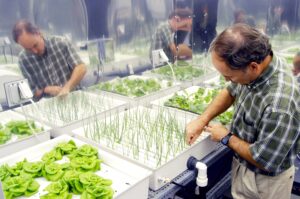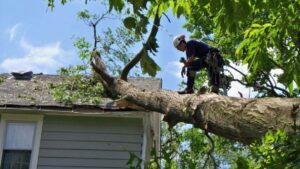The deforestation crisis is a pressing global issue, with over 15 billion trees cut down annually, leading to significant environmental degradation and biodiversity loss. The primary drivers of this alarming trend include agricultural expansion and urban development, contributing substantially to greenhouse gas emissions and perpetuating climate change. As these forests vanish, the repercussions extend far beyond mere statistics, threatening the stability of ecosystems and the livelihoods of countless communities. Exploring the underlying causes and potential solutions reveals a complex web of challenges that demand urgent attention—yet, the question remains: can we effectively combat this crisis before it is too late?
Overview of Deforestation Statistics
The world’s forests, vital components of the Earth’s ecosystem, are under severe threat, with alarming statistics underscoring the scale of deforestation. Every year, over 15 billion trees are felled, leading to a staggering loss of approximately 10 million hectares of forest.
This continuous degradation not only endangers biodiversity but also contributes to around 10% of global greenhouse gas emissions. Effective deforestation policies are desperately needed to address this crisis, yet they often fall short in promoting meaningful tree conservation efforts.
Without immediate action, the irreversible consequences of deforestation will intensify, jeopardizing both ecological balance and human survival. It is imperative that governments and organizations prioritize extensive strategies to protect our forests for present and future generations.
Key Causes of Deforestation
Amidst escalating concerns about environmental degradation, a closer examination of the key causes of deforestation reveals a complex interplay of factors driving this crisis.
Largely, farming practices account for an alarming 80-90% of deforestation in tropical regions, with palm oil and soybean production leading the charge.
Urbanization further exacerbates the issue, fragmenting forests and decimating wildlife habitats.
Additionally, illegal logging undermines sustainable forest management, contributing greatly to the loss of trees and biodiversity.
Mining and oil drilling activities also play their part, as they clear vast areas of forest for resource extraction.
Together, these factors paint a dire picture of a world where the relentless pursuit of development jeopardizes the very ecosystems that sustain life.
Environmental Impacts of Deforestation
Deforestation casts a long shadow over our planet, threatening not only biodiversity but also the very foundation of human survival. The relentless clearing of forests leads to significant biodiversity loss, endangering 80% of terrestrial animal species that rely on these habitats. Additionally, habitat destruction disrupts local ecosystems, affecting approximately 250 million people who depend on forests for their livelihoods. The repercussions extend to soil degradation and altered water cycles, exacerbating global water shortages.
| Environmental Impact | Description | Consequences |
|---|---|---|
| Biodiversity Loss | Loss of species and habitats | Extinction of flora and fauna |
| Soil Erosion | Degradation of land quality | Reduced agricultural productivity |
| Water Cycle Disruption | Alteration of natural water flow | Increased flooding and drought conditions |
| Carbon Emission | Release of stored carbon from trees | Global warming exacerbation |
| Livelihood Threats | Economic impacts on communities dependent on forests | Increased poverty and food insecurity |
Deforestation and Climate Change
Amid ongoing environmental challenges, the link between deforestation and climate change emerges as a crucial concern for global sustainability. Deforestation accounts for approximately 12% of global greenhouse gas emissions, greatly impacting climate regulation.
The loss of forests compromises essential carbon sequestration strategies and undermines forest ecosystem services, which are fundamental for maintaining biodiversity and regulating water cycles.
Key impacts of deforestation on climate change include:
- Release of stored carbon dioxide, exacerbating global warming.
- Disruption of natural carbon storage capacity, hindering climate mitigation efforts.
- Loss of biodiversity, destabilizing ecosystems that contribute to climate resilience.
Addressing deforestation is imperative; halting it could potentially provide up to 30% of the solution to climate change, underscoring the urgency of protective measures.
Global Deforestation Trends
The alarming trend of global deforestation reflects a complex interplay of economic, social, and environmental factors that demand urgent attention.
Recent statistics reveal that approximately 10 million hectares of forest are lost each year, driven primarily by agricultural expansion, urbanization, and illegal logging. These alarming rates call for effective deforestation policies that prioritize sustainable land use and conservation.
Despite growing global awareness of the issue, the implementation of thorough strategies remains inadequate. The consequences of unchecked deforestation extend beyond biodiversity loss; they exacerbate climate change and disrupt essential ecosystems.
It is imperative for governments and organizations to collaborate and establish stringent regulations, thereby safeguarding our forests and mitigating the far-reaching impacts of deforestation on the planet.
Solutions to Combat Deforestation
A concerted effort to combat deforestation is essential for preserving our planet’s ecological balance and mitigating climate change.
Effective solutions include:
- Reforestation Initiatives: Implementing large-scale tree planting projects can restore lost forest cover, enhance biodiversity, and sequester carbon dioxide from the atmosphere.
- Sustainable Forestry: Adopting practices that balance economic needs with conservation can guarantee that forests are managed responsibly, minimizing long-term environmental impact.
- Agroforestry Systems: Integrating trees with agricultural practices can provide economic benefits while promoting soil health and reducing deforestation pressure.
Community Involvement in Conservation
Frequently, community involvement emerges as an essential element in the fight against deforestation and the conservation of natural resources. Local initiatives, driven by community education, empower individuals to take action and foster sustainable practices. Engaging local populations guarantees that conservation strategies are culturally relevant and economically viable.
| Initiative Type | Description |
|---|---|
| Community Education | Workshops and programs that inform locals about sustainable practices. |
| Reforestation Projects | Community-led efforts to plant and nurture trees in deforested areas. |
| Sustainable Agriculture | Training programs on agroforestry techniques for sustainable farming. |
| Wildlife Protection | Initiatives to safeguard local wildlife habitats through community action. |
Conclusion
The deforestation crisis demands immediate attention, as the loss of forests poses significant risks to ecosystems, biodiversity, and climate stability. Without decisive action, the consequences could be dire, leaving future generations to inherit a barren landscape. It is imperative to recognize that the stakes are high; failure to act could mean losing the forest for the trees. Collaborative efforts, innovative policies, and community engagement are essential for combating this crisis and fostering a sustainable future for the planet.


